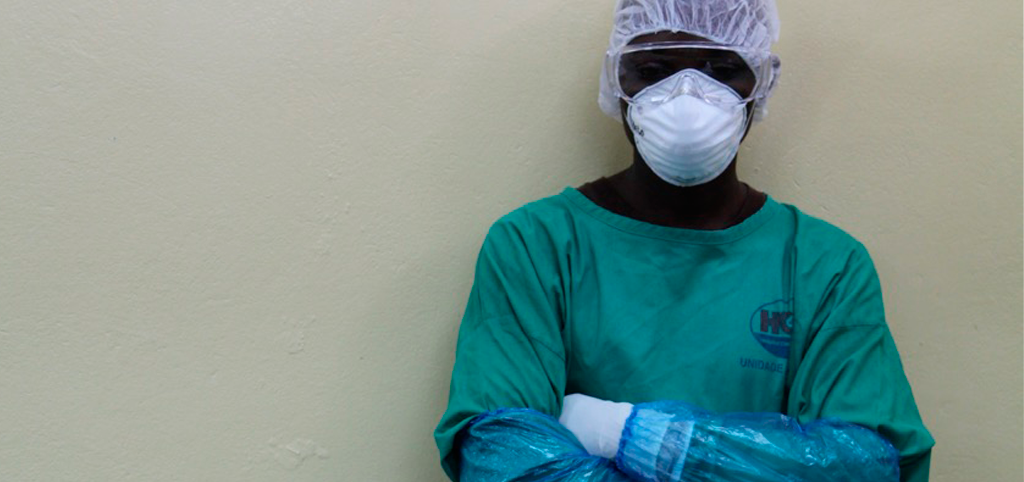Studies Demonstrate the Efficacy and Acceptability of New Technique for Identifying Cause of Death in Low-Income Regions
ISGlobal and CISM researchers assess a new technique that offers an alternative to complete autopsy for determining cause of death
22.11.2016
The results of two studies published in PLOS Medicine confirm that a minimally invasive autopsy technique can reliably determine cause of death in developing countries and that the method is well accepted in the community. In the first of these two studies, which was led by Jaume Ordi—a pathologist at ISGlobal and the Hospital Clínic and a titular professor at the University of Barcelona—the authors observed a high concordance between the diagnoses obtained using the minimally invasive method and those obtained with complete diagnostic autopsies in a series of deceased adult patients in Mozambique. The second study—led by Khátia Munguambe, director of Social Sciences at the Manhiça Health Research Centre (CISM)—revealed that the minimally invasive technique achieved high acceptability in five countries in sub-Saharan Africa and Southeast Asia.
Complete diagnostic autopsy is the gold standard method for determining cause of death. In developing countries, however, complete autopsy is difficult to perform due to a lack of expertise and infrastructure. The methods currently used in such settings, which include verbal autopsy and analysis of clinical records, are unreliable owing to their poor accuracy. Noninvasive autopsy techniques based on imaging studies developed in recent years have been shown to be accurate and acceptable, but they involve high-tech procedures not accessible in resource-poor settings.
To resolve this problem, researchers on the CaDMIA project designed a minimally invasive autopsy method based on histological and microbiological analysis of blood and cerebrospinal fluid as well as of tissue samples from solid organs obtained using biopsy needles. The aim was to design a simple procedure that could be performed in developing countries as an alternative to complete autopsy.
In the first of these two studies, the researchers compared the cause of death as determined by a minimally invasive autopsy with the results obtained by complete diagnostic autopsy in 112 deceased adult patients. The agreement between the two diagnostic methods was 76% overall and even higher in the case of deaths caused by an infection disease.
Explaining the significance of these findings, Jaume Ordi commented “This technique could revolutionise the methods used to identify cause of death in low-income countries and, consequently, greatly improve the prioritisation of health policies in those regions”.
In the second study, researchers interviewed over 500 informants, including people who had recently lost a family member. The interviews were conducted and data collected in five countries: Gabon, Kenya, Mali, Mozambique and Pakistan. The researchers reported that 75% of those interviewed expressed a willingness to know the cause of death of their deceased relative and 73% said that the practice of the proposed minimally invasive autopsy would be acceptable to them.
Reflecting on the implications of the study, Khátia Munguambe said “The results are encouraging because they open the door to new ways of studying cause of death and the possibility of putting in place more informed, and therefore more effective, health policies and strategies”.
These two studies form part of a collection of 12 articles on the CaDMIA project to be published by PLOS Medicine over the coming months. The collection will present the validation results for the minimally invasive autopsy in different age groups and geographical regions, the assessment of its acceptability to communities and health professionals, and an analysis of the factors that may facilitate or obstruct its introduction. The aim is to provide a guide for the implementation of this new method in rural areas of developing countries.
CaDMIA Project
The CaDMIA study (2013-2015) was funded by the Bill & Melinda Gates Foundation and the Spanish Ministry of Health’s Research Fund and led by ISGlobal. The objectives were to design and validate a minimally invasive autopsy technique that could be used in low-income countries to identify cause of death in patients who died of infectious diseases and then to assess the acceptability and feasibility of using the method in different cultural and religious settings and geographical areas. When the initial project had been completed, the research continued with the CaDMIA-plus project (2016-2018), also funded by the Bill & Melinda Gates Foundation. The aim of the follow-on project was to perfect the technique and continue its validation in children under five years of age. As part of the project, a research and training centre specialised in minimally invasive autopsy will be set up in ISGlobal/Hospital Clínic/University of Barcelona. The CaDMIA-plus study continues under the leadership of ISGlobal with ongoing work at the Hospital Central de Maputo and the Manhiça Health Research Centre (CISM) in Mozambique. The research team is also involved in Child Health and Mortality Prevention Surveillance (CHAMPS), an international disease surveillance network focussed on child mortality funded by the Bill & Melinda Gates Foundation and coordinated by Emory University and the US Centers for Disease Control and Prevention



